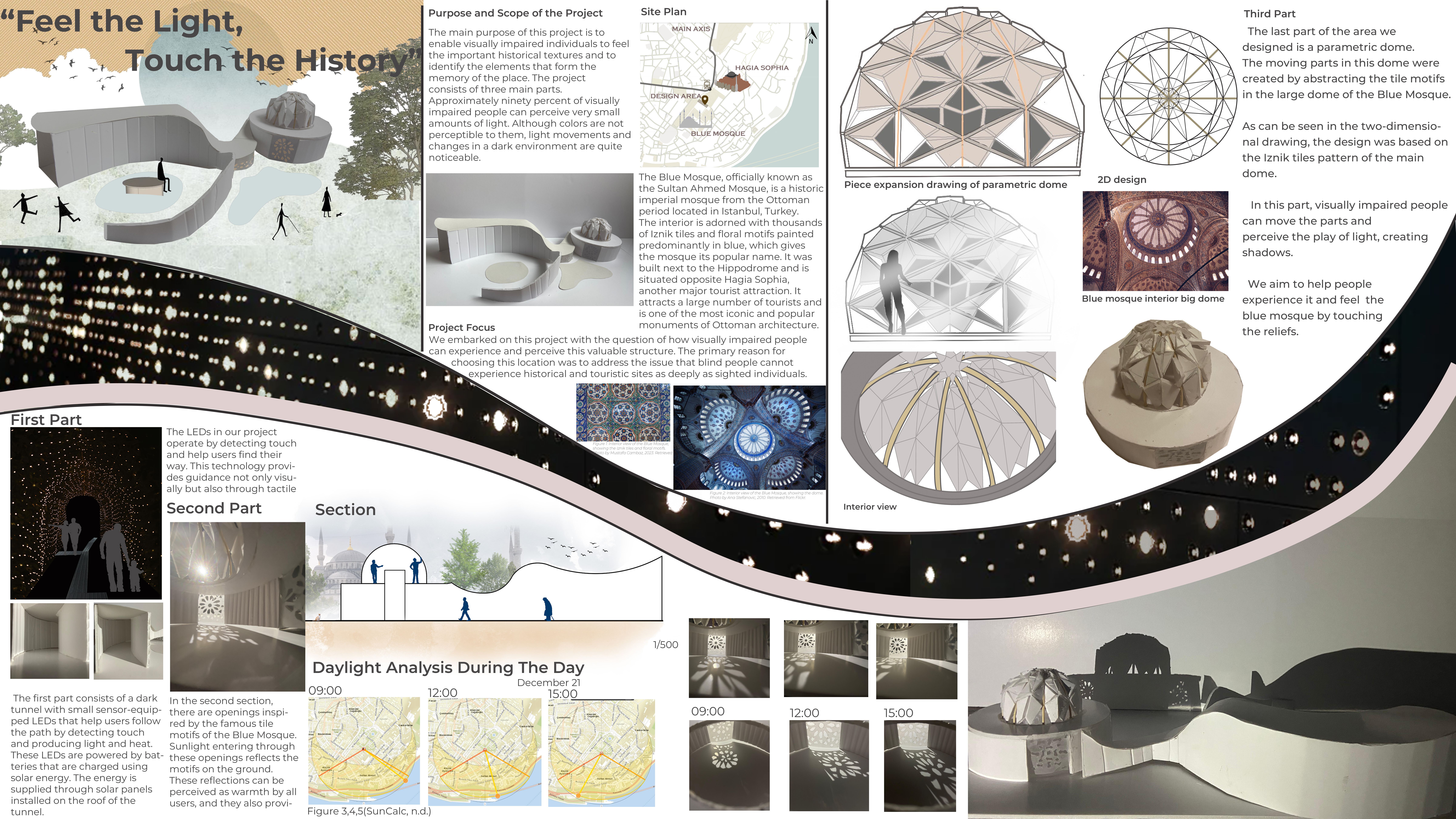2024 - Feel the Light, Touch the History

Category
Daylight in Buildings - Region 2: Eastern Europe and The Middle East
Students
EMEK ÖZGE GÜLEŞE & BİRSU MERİÇ
Teacher
Natalia Sokół
School
Politechnika Gdańska
Country
Poland
Download
Download project board
In our project, we aimed to adopt a comprehensive design approach. A study published in Current Biology claims that light may be detected by even the most visually impaired individuals. According to a study published in Medical Daily, visually impaired people’s non-visual photoreceptor cells can still react to light (Medical Daily, 2016). Based on this information, we developed a design to be placed in Sultanahmet Square. The primary reason for choosing this location was to address the issue that blind people cannot experience historical and touristic sites as deeply as sighted individuals.
Our design consists of three main parts. The first part consists of a dark tunnel with small sensor-equipped LEDs that help users follow the path by detecting touch and producing light and heat. These LEDs are powered by batteries that are charged using solar energy. The energy is supplied through solar panels installed on the roof of the tunnel. The LEDs in our project operate by detecting touch and help users find their way. This technology provides guidance not only visually but also through tactile feedback. The combination of light and heat allows users to move more safely and easily.
In the second section, there are openings inspired by the famous tile motifs of the Blue Mosque. Sunlight entering through these openings reflects the motifs on the ground. These reflections can be perceived as warmth by all users, and they also provide a tactile experience for individuals, as they can detect light movements. In this way, historical motifs can be experienced both visually and tactilely.
The third part features a parametric dome. The materials used in this dome allow users to open parts by touch, enabling them to control the angle and amount of daylight entering the space. This interactive feature allows users to adjust the light and heat in the space according to their needs, making the design customizable and accessible.
In conclusion, with our project, we aimed to provide an accessible and meaningful experience for visually impaired individuals in Sultanahmet Square. Our comprehensive design was developed in the light of scientific research and tailored to the needs of users. This design offers an experience based not only on visual but also on tactile and thermal perception, allowing visually impaired individuals to fully experience the historical and cultural richness.

























